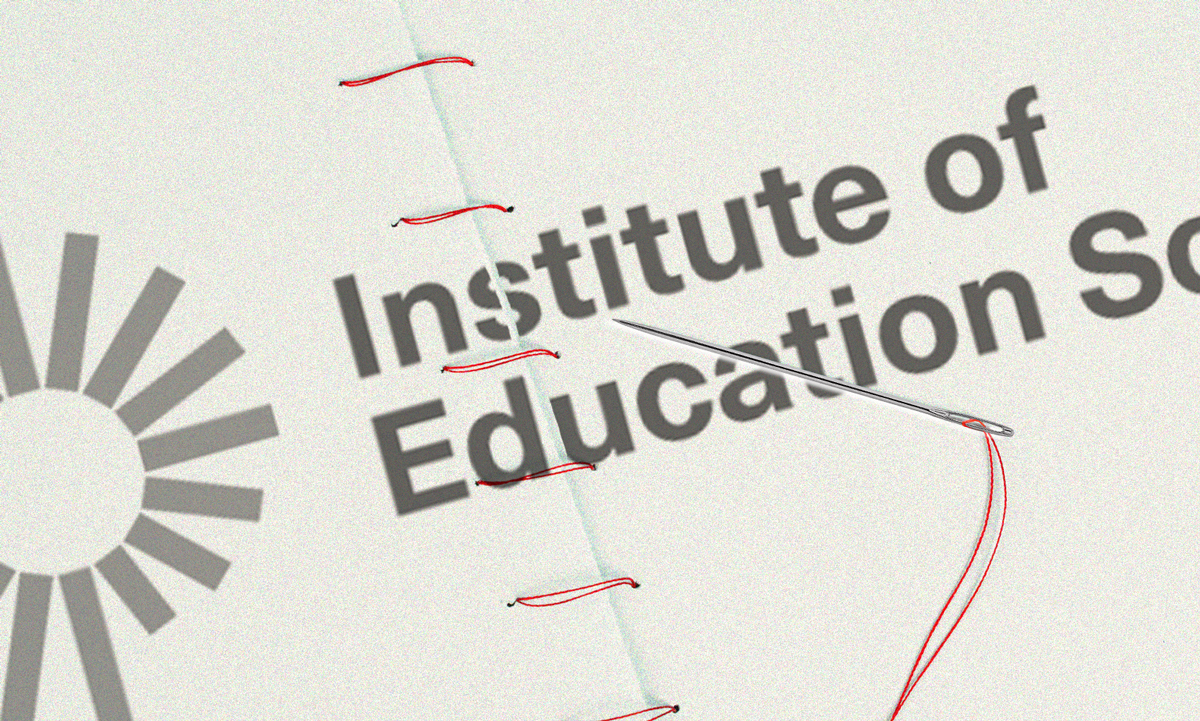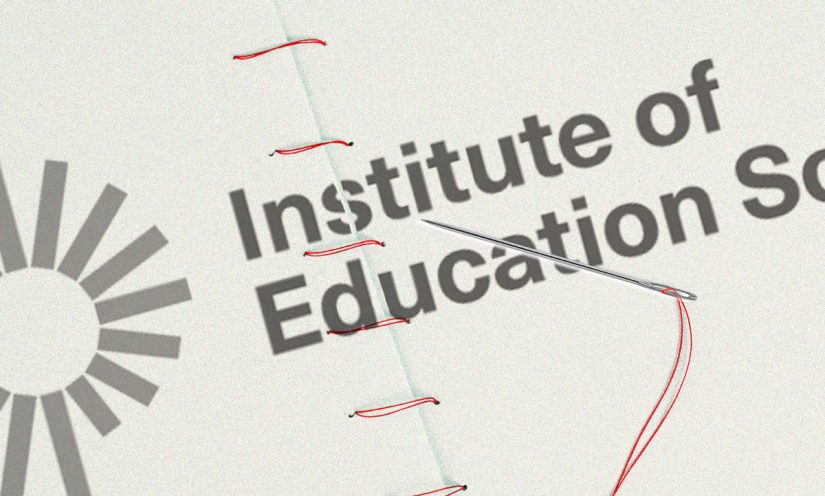The nation needs more education research, not an end to it. Here are five ideas for a more strategic, agile, relevant and impact-driven federal agency
By Dan Goldhaber, Ashley Jochim, Robin Lake & Andrew J. Rotherham

This story first appeared at The 74, a nonprofit news site covering education. Sign up for free newsletters from The 74 to get more like this in your inbox.
Last week, DOGE’s “shock and awe” campaign came to education. The chaotic canceling of grants and contracts for various research activities at the Institute of Education Sciences (IES), a little-known yet important agency rarely at the center of public debate, was unprecedented. It showed that the Trump administration is becoming adept at using the tools of government against the federal bureaucracy.
Many voters cheer these efforts, frustrated with a system they see as prioritizing elite interests over their problems. The IES chaos energized Trump supporters and horrified the education research community. But few addressed the most important question: What now?
Like many government activities, the value of education research isn’t always immediately obvious. But just because something is obscure, that doesn’t mean it’s irrelevant. In fact, a strong case can be made that the nation underinvests in education research. IES’s budget of $793 million is a fraction of the more than $900 billion spent annually by federal, state and local governments on just K-12 public schools. That’s a staggeringly lower percentage for R&D than most industries — certainly less than what Elon Musk’s companies spend.
Federal investment in education research focuses on closing the gap between the aspirations of public schools and real-world outcomes. Daniel Patrick Moynihan, chief architect of the first federal modern education research agency, envisioned it as a way to develop “the art and science of education” to achieve true equality of opportunity. An essential mission — but the U.S. is failing to deliver on it.
“Shoddy work on trivial topics,” research warped by political priorities and bloated bureaucracies draining limited resources. That’s not Elon Musk and DOGE talking, that’s Chester E. Finn Jr., a key architect of federal education research-turned-critic pleading for reform in 2000.
Just two weeks ago, the Nation’s Report Card, produced by IES, showed the largest achievement gaps between the lowest- and highest-achieving students ever recorded. A decade of decline, coupled with disastrous pandemic responses, set achievement for struggling students back to 1990s level. International assessments reveal the U.S. as a global outlier, with a growing share of adults assessed at the lowest levels of literacy.
This is not inevitable. For decades, America made steady gains in educational achievement. States are recovering from the pandemic in differentiated ways. Overall, however, achievement stagnated in the years leading up to COVID, and the nation has clearly failed to recover from the pandemic learning loss, despite significant federal spending on schools. This makes government investments in education research instrumental to understanding America’s slow, halting progress toward making good on the promise of public education, and the cliff it’s gone off the past few years.
The “science of reading” movement illustrates the power of research and the shortcomings of the existing federal approach. Journalist Emily Hanford’s reporting on reading instruction did more to change classroom practices than the entire What Works Clearinghouse — a federally funded, bureaucratic mechanism for reviewing evidence.
IES’s mission, to “provide national leadership in expanding fundamental knowledge and understanding of education from early childhood through postsecondary study … to provide parents, educators, students, researchers, policymakers and the general public with reliable information about … the condition and progress of education in the United States” remains essential. Yet IES is not meeting these goals.
The answer is not to jettison the federal role in education research. On the contrary, the nation needs more of it, and better. The lack of outrage from people working in schools about the DOGE cuts is a silence worth listening to.
Here are five ideas for a more strategic, agile, relevant and impact-driven IES:
Confront the Political and Structural Barriers to Implementation
Developing effective strategies is not enough — the real challenge is getting educators to use them at scale in a decentralized system where states, districts and schools operate independently. Testing and innovation must have buy-in from those in the field so they are more strongly linked to adoption.
Political pressures, bureaucratic inertia and rigid regulations often prevent research-backed solutions from taking hold. IES should prioritize research that not only evaluates effectiveness, but also identifies the policy, governance and systemic barriers that block effective implementation. The agency prioritizes rigorous experimental studies, which is good, but other methods are also needed to answer questions about implementation. And this work must be better disseminated and applied, not just passed around among researchers.
Be a More Active Arbiter of ‘What Works’
Every year, school districts spend billions on curriculum, technology and instructional interventions, often with little regard for evidence. IES should evolve beyond the passive and hard-to-interpret What Works Clearinghouse and become an active information and standards-setting body. That could mean:
- Continuing, even expanding, essential data that inform parents and policymakers, like the National Assessment of Educational Progress (NAEP) and the Common Core of Data, the Department of Education’s primary database on K-12 schools and districts.
- Issuing A-F ratings for educational interventions, modeled after the U.S. Preventive Services Task Force in health care.
- Convening expert panels, like the National Reading Panel, to resolve key education debates and provide clear, evidence-based guidance.
- Tracking successes and failures, publishing reports on which states and districts effectively use research-based strategies.
Tackle Hard Questions Without Fear
For too long, education research has avoided politically sensitive but critical questions. IES should lead on issues such as:
- Why is early reading proficiency still tied so strongly to family income?
- How does the teacher pay structure discourage ambitious, high-achieving individuals from entering or staying in the profession?
- What outdated regulations and funding mechanisms are stifling school innovation?
IES must be willing to confront uncomfortable truths — and ensure its research drives real policy action.
Better Data and Utilization of Existing Field Capacity.
The Common Core of Data, along with other information IES collects, represents some of the most used evidence in education research. Yet there are also glaring holes in what IES collects and, therefore, what researchers can explore. Very little is known, for instance, systemically about what teacher candidates learn when they are preparing to teach. Nor is there good, comprehensive national information about how much teachers earn or even what compensation is based on.
IES can collect some data, but it must ask hard questions about whether this or other data collections should be done in house. Over time, IES has held onto functions that nonprofit organizations like RAND and the Advanced Education Research & Development Fund have proven they can do as well, or better. It can take years for IES to publish results, while others can do it in months. A reformed IES should focus on what it does best — funding and evaluating research, operating nimbly and maintaining quality and independence — while supporting capacity elsewhere in the field for things like large-scale data collection and reporting, fast-turnaround field surveys and DARPA-like R&D investments.
The Department of Defense’s DARPA has pioneered breakthrough innovations in the military by funding high-risk, high-reward research with clear objectives and short timelines. IES could replicate this strategy by funding one or more bold new initiatives to conduct ambitious, time-bound research. This would bring together top scientists, technologists and educators for five-year terms to work on pioneering transformative solutions, such as AI-driven personalized learning, early literacy breakthroughs and reimagined teacher preparation. Notably, DARPA is not a new governmental function; it’s a mechanism for using fieldwide capacity in the private and university sectors as a problem-solving framework.
Launch a National ‘Moonshot’ for Education
Rather than spreading resources across countless disconnected projects, IES should focus on the most urgent educational challenges. A National Education Challenge Panel should be convened every five years to identify critical research priorities tied to a broader federal policy strategy. Immediate areas of focus could include:
- “Eliminate the early literacy gap by 2035.”
- “Ensure every eighth grader can master algebra”
- “Ensure every high school graduate is truly college- or career-ready by 2030.”
- “Revolutionize the teaching profession to attract a cross-section of top college graduates.”
Instead of fragmented efforts, this would focus the entire education research ecosystem on delivering real, transformative change.
Trump identifies as a deal maker. The ideas here could be the beginning of a new deal for education research, producing timely and usable evidence. We recognize that reforming IES in these ways will be controversial, requiring hard decisions about what research should prioritize and how the federal government should support it. But the status quo or abandonment of federal education research would be worse — leaving progress to a fragmented, underfunded patchwork of individual researchers and often ideological interest groups.
Even if you don’t like how DOGE and the Trump administration are approaching their work — and we don’t — it is past time to substantially mend the federal role in education research. Especially now, if you don’t want to see that role end.
Disclosure: The authors have all received funding from, or worked on projects funded by, IES and have worked or currently work with RAND. Andy Rotherham sits on The 74’s board of directors.








